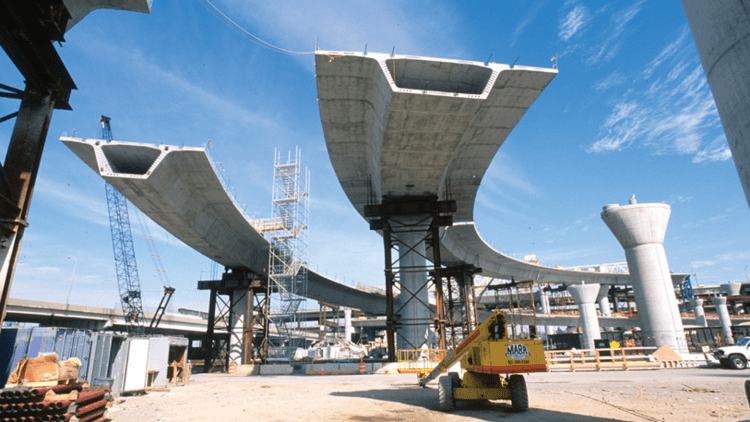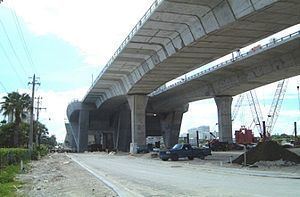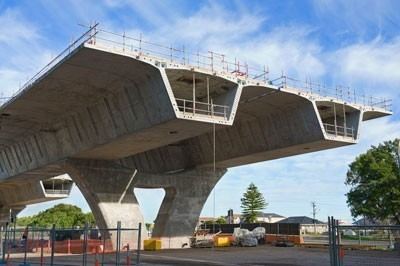Carries Traffic Movable No Falsework required Yes | Span range Long Design effort High | |
 | ||
Related Similar Box girder bridge, Girder bridge, Beam bridge, Plate girder bridge, Tied‑arch bridge | ||
As its name implies, a segmental bridge is a bridge built in short sections (called segments), i.e., one piece at a time, as opposed to traditional methods that build a bridge in very large sections. The bridge is made of concrete that is either cast-in-place (constructed fully in its final location) or precast concrete (built at another location and then transported to their final location for placement in the full structure).
Contents
- Segmental bridges construction 3d animation
- History
- Construction
- Notable examples
- Related sites
- References

These bridges are very economical for long spans (over 100 meters), especially when access to the construction site is restricted. They are also chosen for their aesthetic appeal.

Segmental bridges construction 3d animation
History
The first segmental concrete bridge, built in 1950, was cast-in-place across the Lahn River in Balduinstein, Germany.
The first precast segmental concrete bridge, built in 1962, crossed the Seine River in France.
Construction

The sequence of construction is similar to traditional concrete bridge building, i.e., build the support towers (columns), build the temporary falsework, build the deck, perform finish work. The principal differences are as follows:

- The support towers may be built segmentally. Often this is accomplished using "slip-form" construction, where the falsework moves (slips) upward following sequential concrete "pours." The falsework uses the newly constructed concrete as the basis for moving upward.
- After the towers are built, a superstructure is built atop the towers. This superstructure serves as the "launching" point for building the deck. (The deck is often built in both directions away from the tower, simultaneously.)
- The deck is now constructed sequentially, beginning at the tower, one section at a time.
- In cast-in-place bridges, the falsework is connected to the previously installed concrete and allowed to cantilever freely. Next, the permanent reinforcing steel and supports are installed. Finally, the concrete is placed and cured, freeing the falsework to be moved.
- In pre-cast bridges, the concrete segment is constructed on the ground, and then transported and hoisted into place. As the new segment is suspended in place by the crane, workers install steel reinforcing that attaches the new segment to preceding segments. Each segment of the bridge designed to accept connections from both preceding and succeeding segments.
- The process in step 3 is repeated until the span is completed.
